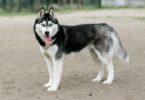Choosing a dog companion can feel overwhelming. With so many breeds, each offering unique traits, how do you find the perfect match? Imagine a fluffy, affectionate companion that combines intelligence with a playful spirit—a dog that fits seamlessly into family life while catering to allergy-prone owners.
This guide explores a popular hybrid breed celebrated for its charm and adaptability. Known for their curly coats and cheerful personalities, these dogs inherit the best qualities from their parent breeds. You’ll discover their origins, care needs, and why they’ve become a top choice for households nationwide.
Whether you’re a first-time owner or an experienced pet parent, this article breaks down essential details. We’ll cover grooming routines tailored to their low-shedding fur, health considerations specific to the breed, and training tips that leverage their eager-to-please nature. Their hypoallergenic qualities make them ideal for sensitive families, while their compact size suits urban and suburban living.
By blending factual insights with practical advice, this resource empowers you to make informed decisions. Ready to learn why this crossbreed continues to win hearts? Let’s dive in.
Introduction to the Bichon Frise Poodle Mix
Families seeking a hypoallergenic companion often discover a joyful match in this crossbreed. Combining the Bichon Frise and Poodle lineages, this designer dog blends intelligence with playful affection. Often called a Poochon or Bichpoo, it’s celebrated for its low-shedding coat and adaptable nature—ideal for households with allergy concerns.
Weighing 10–15 pounds, these compact dogs thrive in apartments and homes alike. Their soft, curly fur ranges from white to cream, requiring regular grooming to prevent matting. Known for their cheerful disposition, they form strong bonds with children and adults, making them excellent family pets.
What sets this hybrid apart? Their temperament balances the Poodle’s sharp wit with the Bichon’s outgoing charm. They’re eager to please, responding well to training and socialization. While energetic, their exercise needs fit easily into daily routines.
Later sections will explore grooming routines, health considerations, and training strategies tailored to this breed. Whether you’re adopting a puppy or rescuing an adult dog, understanding their unique traits ensures a fulfilling partnership.
History and Origin of the Breed
Tracing the roots of this popular crossbreed reveals a rich heritage. Breeders in Australia first intentionally paired its parent breeds during the late 1990s, aiming to combine hypoallergenic coats with adaptable personalities. The result? A dog celebrated for intelligence and charm, perfect for modern households.
Bichon Frise Legacy
Originally from the Canary Islands, the Bichon Frise gained fame as a royal companion in 16th-century Europe. French nobility adored these cheerful dogs, often showcasing them as living accessories. By the 1800s, their role shifted—circus performers capitalized on their trainability and whimsical appearance.
Poodle Heritage and Development
Despite their refined image today, Poodles began as skilled duck hunters in Germany. Their water-resistant curly coats and athletic build made them ideal retrievers. Over time, they transitioned into fashionable pets, particularly favored by European aristocrats for their elegance and sharp minds.
This intentional blending of histories created a breed that excels as both a family pet and a responsive companion. Their lineage explains the low-shedding coats and keen problem-solving abilities owners cherish today.
Unique Physical Characteristics
Recognizing this hybrid breed involves noting distinctive traits that set it apart. Their appearance blends soft curves with lively expressions, making them instantly charming to pet lovers. Below, we break down key features to help identify these dogs.
Size, Build, and Proportions
Most stand 9–15 inches tall at the shoulder, weighing 6–17 pounds. Toy versions lean toward the lower end, while miniatures reach up to 15 inches. Their compact bodies feature sturdy legs and a balanced frame suited for agility.
Expressive round eyes and a button nose enhance their teddy-bear appeal. The tail often curls over the back, adding to their playful silhouette. These proportions make them adaptable to both active play and cozy laps.
Coat Colors and Texture
The coat varies from loose waves to tight curls, inheriting the Poodle’s hypoallergenic qualities. Regular brushing prevents tangles, especially for longer fur. Common shades include creamy white, apricot, and soft red tones.
Some develop parti-coloring—a mix of two hues—as they mature. Lighter colors like cream dominate, though deeper apricot shades appear in small breeds with stronger Poodle lineage. Seasonal trimming maintains their fluffy appearance while reducing shedding.
Understanding the bichon frise poodle mix Temperament
What makes this breed a favorite among pet lovers? Their sunny disposition and loyalty create an instant connection with families. These dogs thrive on human interaction, greeting everyone with wagging tails and gentle curiosity. Their non-aggressive nature makes them safe around children, while their playful energy keeps homes lively.
Intelligence shines through in their quick learning abilities. Inheriting the Poodle’s problem-solving skills and the Bichon Frise’s eagerness to please, they excel at obedience training. Short, positive reinforcement sessions work best—think treats and praise for mastering “sit” or “stay.”
Social butterflies by nature, these companions adapt well to bustling households or quiet apartments. They’ll happily join you on errands or snuggle during movie nights. However, their affectionate temperament means they dislike being alone for long periods. Leaving a puzzle toy or arranging midday check-ins helps prevent anxiety.
Prospective owners appreciate how this breed enriches daily life. Whether playing fetch with kids or curling up with seniors, they form deep bonds. Their blend of cheerfulness and adaptability explains why people describe them as lifelong friends in compact, fluffy packages.
Grooming and Maintenance Essentials
Maintaining a healthy coat requires consistent care and smart routines. This breed's signature curls demand attention to stay tangle-free and vibrant. Let’s explore practical strategies to simplify upkeep while keeping your companion comfortable.
Daily Care and Brushing Tips
Daily brushing prevents mats from forming in dense fur. Use a slicker brush followed by a metal comb to reach deeper layers. Focus on problem areas like behind the ears and under the legs where knots develop quickly.
Pair grooming sessions with dental care and ear checks. Wipe ears weekly with vet-approved solution to prevent infections. Trim nails every 3-4 weeks to avoid overgrowth affecting their gait.
Professional Grooming Recommendations
Schedule professional appointments every 4-6 weeks for expert trimming. Groomers shape the coat to maintain breed standards and check skin health. Look for certified specialists experienced with curly-haired breeds—read reviews and ask about sanitization practices.
Between visits, use conditioning sprays to manage frizz. Reward cooperation during home sessions with small training treats. This balance of DIY care and professional support keeps coats thriving year-round.
Health and Common Medical Concerns
Every dog deserves a thriving life, and proactive care makes that possible. While generally healthy, this breed may face specific medical challenges requiring attention. Early awareness helps owners spot warning signs and partner effectively with veterinarians.
Inherited Health Risks
Genetic factors play a role in conditions like patellar luxation, where kneecaps slip out of place. Watch for limping or sudden reluctance to jump. Cataracts and hip dysplasia also appear in some lines, emphasizing the need for breeder transparency.
Dental disease ranks high among health issues due to their small jaws. Regular brushing prevents plaque buildup leading to gum infections. Allergies often manifest through itchy skin or ear inflammation, requiring dietary adjustments or medication.
Preventative Care and Veterinary Checkups
Annual exams catch problems before they escalate. Bloodwork screens for metabolic disorders, while eye checks monitor vision changes. Puppies from ethical breeders come with health clearances, reducing disease risks through genetic testing.
Nutrition matters—high-quality food supports joint health and immune function. Combine measured meals with daily walks to maintain ideal weight. Track changes in energy levels or appetite, as these often signal underlying health problems needing prompt care.
Feeding and Nutritional Needs
Proper nutrition lays the foundation for a healthy, energetic companion. Small breeds like the bichon poodle mix have fast metabolisms, requiring calorie-dense meals packed with essential nutrients. Tailoring their diet supports energy levels, coat health, and longevity.
Best Diet Practices for Small Breeds
Choose AAFCO-approved kibble formulated for small dogs. These blends feature smaller kibble sizes for easier chewing and higher protein ratios to fuel active lifestyles. Look for omega-3 fatty acids to maintain skin health and reduce shedding.
Puppies need three to four meals daily, transitioning to two as adults. Mix dry food with occasional wet options for hydration variety. Avoid fillers like corn or soy—prioritize real meat as the first ingredient.
Meal Portions and Treat Guidelines
Measure portions using a kitchen scale: ¼ to ½ cup daily split into meals, adjusted for weight and activity. Treats shouldn’t exceed 10% of daily calories—opt for low-calorie training rewards.
Weekly weigh-ins help prevent obesity. If switching foods, blend old and new options over seven days to avoid digestive upset. Always provide fresh water, especially after play sessions.
Training Tips for the Bichon Frise Poodle Mix
Smart breeds thrive with structured guidance. Their natural intelligence and playful energy make training both rewarding and essential. A consistent routine builds trust while channeling their curiosity into positive behaviors.
Positive Reinforcement and Socialization
Start with short, upbeat sessions using treats or clickers. Reward desired actions immediately—like sitting calmly—to reinforce good habits. Introduce new people, sounds, and environments during the first six months to prevent fear-based barking.
Teach basic commands such as “leave it” or “come” using high-value rewards. Pair these with crate training to create safe spaces. Socialized puppies adapt better to vet visits, grooming, and household changes.
Agility and Obedience Training
Channel their athleticism into obstacle courses or fetch games. Set up mini jumps using household items for mental stimulation. Many excel in obedience trials, mastering complex tricks like weaving through poles or retrieving specific toys.
Rotate activities to maintain engagement. Try hide-and-seek with treats or puzzle feeders that challenge problem-solving skills. Always end sessions on a positive note to keep them eager for the next challenge.
Social Skills and Suitability for Families
When searching for a family-friendly pet, social adaptability ranks high on most owners’ checklists. This crossbreed shines in households with children, effortlessly blending gentle playfulness with patience. Their natural affinity for human interaction makes them quick to bond with all family members, from toddlers to seniors.
These dogs thrive in homes with other pets, showing remarkable tolerance toward cats and fellow canines. Breeders often note their non-territorial temperament—a trait inherited from both parent breeds. Early socialization strengthens this adaptability, ensuring peaceful coexistence in multi-animal environments.
Separation anxiety can develop if left alone too frequently. Combat this by establishing consistent routines: morning walks, interactive toys, and midday check-ins. Many owners use puzzle feeders or rotating playmates to keep their pet mentally engaged during absences.
Rescue organizations highlight countless stories of these dogs becoming emotional support animals. One foster volunteer shared, “They sense when someone needs comfort—always ready with a nuzzle or playful antics.” This emotional intelligence makes them ideal companions for families navigating busy schedules or life changes.
Whether welcoming a puppy or adopting an adult dog, expect a loyal shadow that participates in daily activities. Their need for companionship matches their capacity for joy, creating harmonious households where everyone feels included.
Living Arrangements: Apartment and Home Life
Urban dwellers often worry about finding a dog that fits their space constraints. This adaptable breed thrives in both apartments and houses, needing only moderate room to stay content. Their compact size and moderate energy levels make them ideal for city living.
Exercise Needs in Limited Space
Daily activity keeps these dogs healthy and happy. Short walks around the block twice daily meet their physical needs. Indoor play sessions with puzzle toys or fetch down hallways burn energy without requiring yards.
Mental stimulation matters as much as physical exercise. Rotate interactive games like hide-and-seek with treats or obstacle courses using cushions. These activities prevent boredom and destructive behaviors.
Create a pet-friendly zone with chew toys and climbing structures. Use vertical space with wall-mounted shelves for agility jumps. Foldable playpens offer safe areas for independent play when owners work remotely.
Consistent routines help small dogs adjust to confined spaces. Morning training sessions followed by afternoon playtime establish predictability. This balance reduces anxiety and supports overall well-being.
Selecting a Reputable Breeder or Adoption Option
Bringing home a new companion starts with choosing ethical partners in their care. Responsible breeders prioritize health and temperament, while adoption offers second chances to dogs needing homes. Knowing what to look for ensures your future pet comes from humane, transparent sources.
Key Questions to Ask Prospective Breeders
Start by requesting health clearances for both parent dogs. Reputable breeders provide documentation for genetic tests like patellar evaluations and eye exams. Avoid those who can’t prove their dogs undergo regular screenings.
Visit the facility to assess living conditions. Puppies should interact in clean, spacious areas with access to socialization. Observe how the breeder handles the dogs—trustworthy ones welcome questions and show genuine care for their animals.
Rescue organizations often have thorough vetting processes. Ask about behavioral assessments and medical history when adopting. Many rescues partner with fosters who socialize dogs in home environments first.
Check credentials like kennel club affiliations or certifications. Ethical breeders offer lifetime support and take back dogs if circumstances change. Transparency about challenges, like potential allergies, builds trust in their commitment to the breed.
Cost Considerations and Long-Term Investment
Understanding the financial commitment helps owners prepare for a joyful journey. Initial costs vary widely—purchasing a puppy from breeders ranges from $600 to $3,000. Adoption fees through rescues typically fall between $150-$500, covering vaccinations and spaying.
Monthly expenses add up quickly. Professional grooming every 4-6 weeks costs $50-$100 per session. Annual vet checkups average $200-$500, while preventive medications like flea treatments add $20-$50 monthly. Budgeting $100 monthly for unexpected needs creates a safety net.
Long-term planning reduces financial stress. Over a 12-15 year lifespan, owners might spend $15,000-$25,000. One Maryland family shared their experience: “Regular dental cleanings and allergy management added $1,200 yearly, but pet insurance covered 80% of emergency surgeries.”
Inherited health risks require proactive savings. Conditions like hip dysplasia or heart issues can cost $2,000-$5,000 per incident. Reviewing your Bichpoo care guide helps anticipate needs while balancing quality of life.
Smart strategies make care affordable. Many use dedicated savings accounts or wellness plans from veterinarians. Prioritizing preventive care and comparing service providers keeps expenses manageable without compromising your companion’s well-being.
Final Thoughts on Your Bichon Frise Poodle Mix Journey
Welcoming a new companion into your home brings both excitement and responsibility. This guide has explored every facet of caring for a designer breed that blends intelligence, affection, and adaptability. From their hypoallergenic coats to their cheerful temperament, these dogs offer unique qualities fitting diverse lifestyles.
Consistent grooming, tailored nutrition, and early socialization lay the groundwork for a thriving partnership. Regular vet visits help address potential health problems common in small dog breeds, ensuring your pet enjoys a full life. Whether adopting or working with ethical breeders, prioritize transparency about genetic histories and care requirements.
Prospective owners now have the tools to make informed choices. Engage with local pet communities for support, and revisit this resource when planning training routines or budgeting for long-term needs. With proper care, your fluffy companion will reward you with years of loyalty and laughter.
Ready to take the next step? Explore adoption networks or connect with certified specialists to begin your journey. Every wagging tail starts with a decision rooted in knowledge—yours begins here.
FAQ
Are Poochons hypoallergenic?
While no dog is fully hypoallergenic, the Bichon Frise Poodle mix produces less dander than many breeds due to its low-shedding coat. Regular grooming and vacuuming help minimize allergens for sensitive owners.
How often should I schedule vet visits for this breed?
Annual checkups are essential, with bi-annual exams recommended for seniors. Prioritize screenings for patellar luxation, eye conditions, and Addison’s disease—common inherited health risks in parent breeds.
Do these dogs adapt well to apartment living?
Yes, their compact size (9–15 inches tall) and moderate exercise needs make them suitable for smaller spaces. Daily walks and interactive toys prevent boredom in confined environments.
What’s the average lifespan of a Bichon Frise Poodle mix?
With proper care, they typically live 12–15 years. A balanced diet, routine dental care, and weight management contribute to longevity.










Leave a Comment